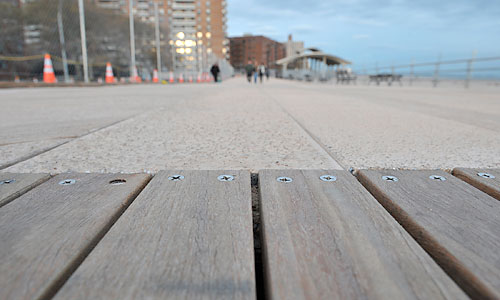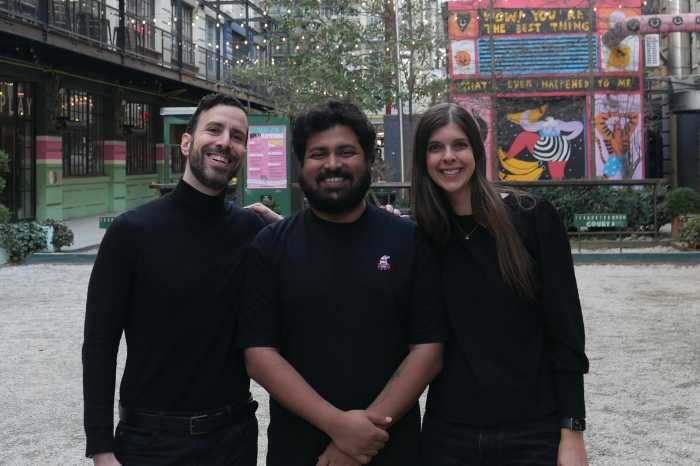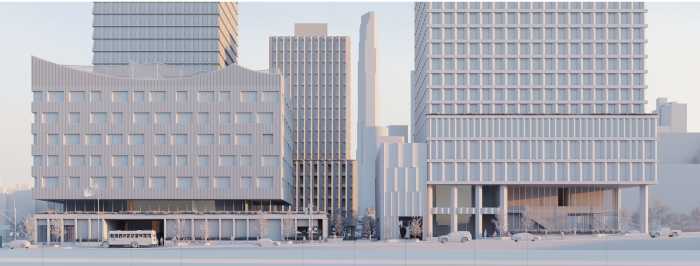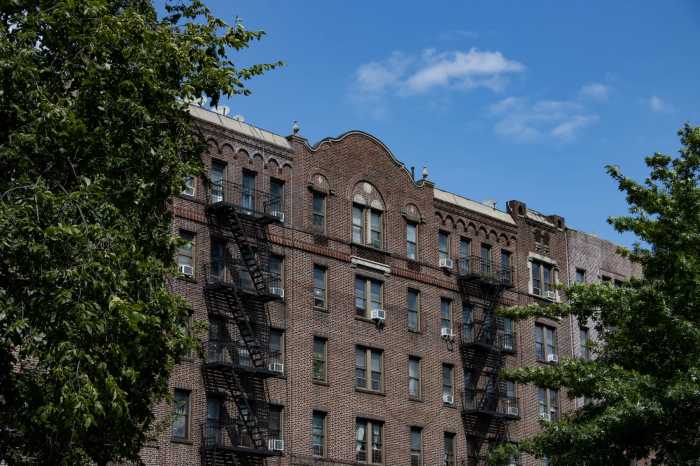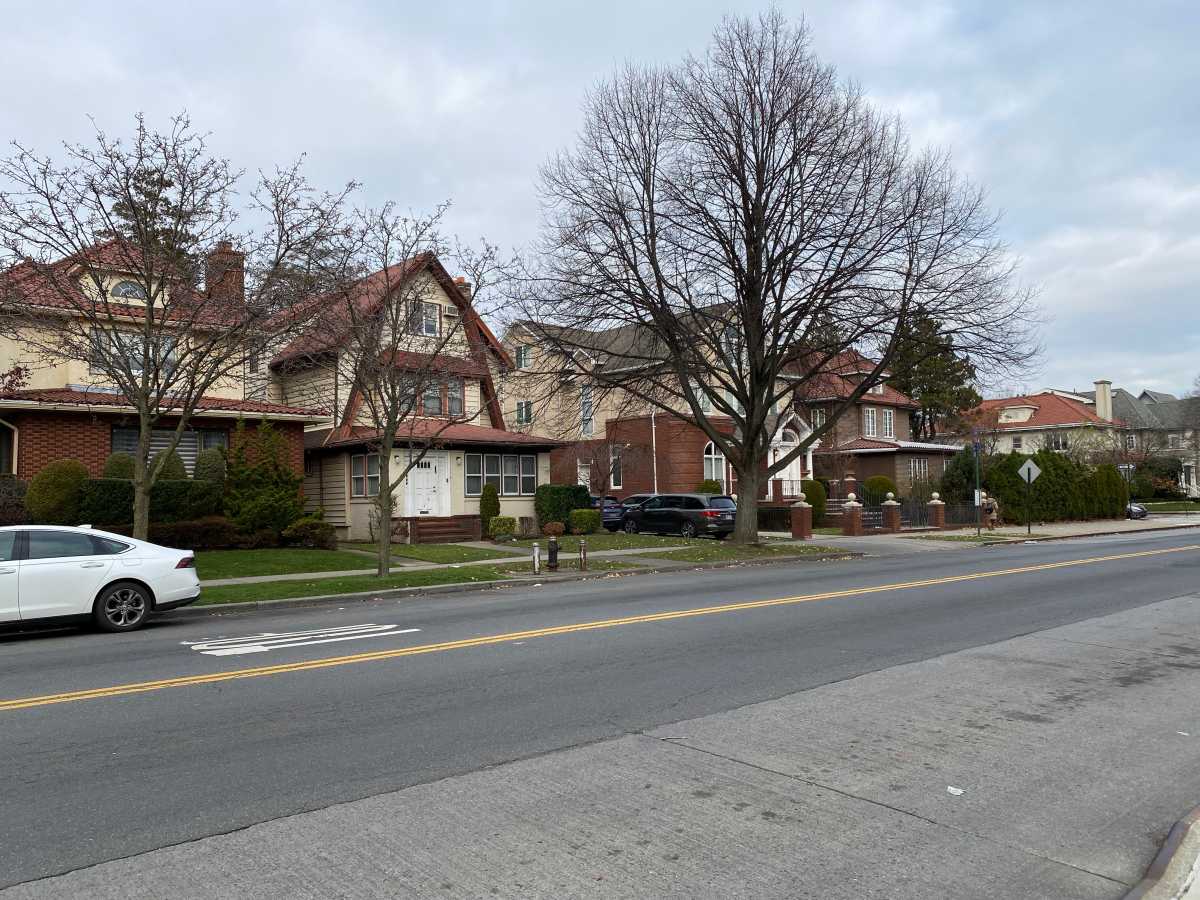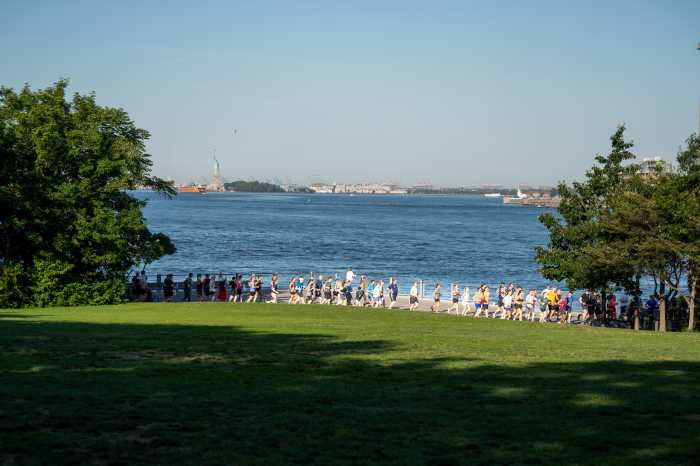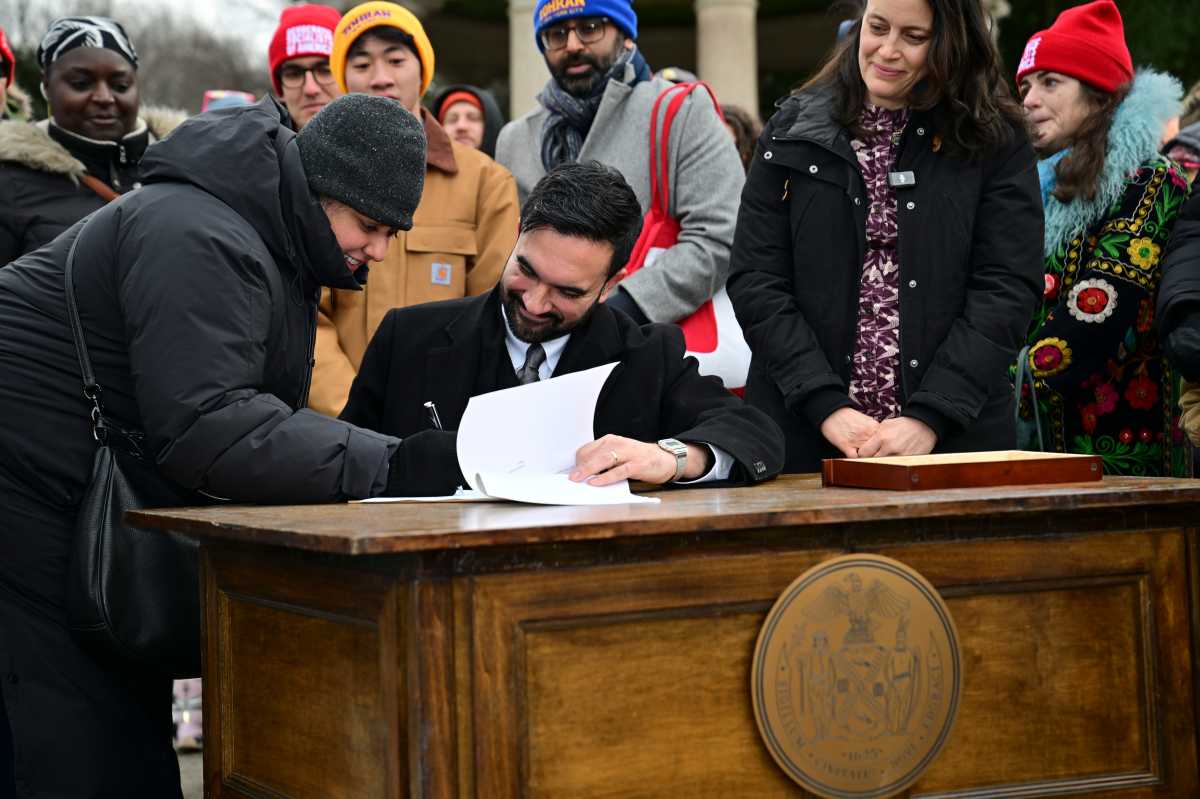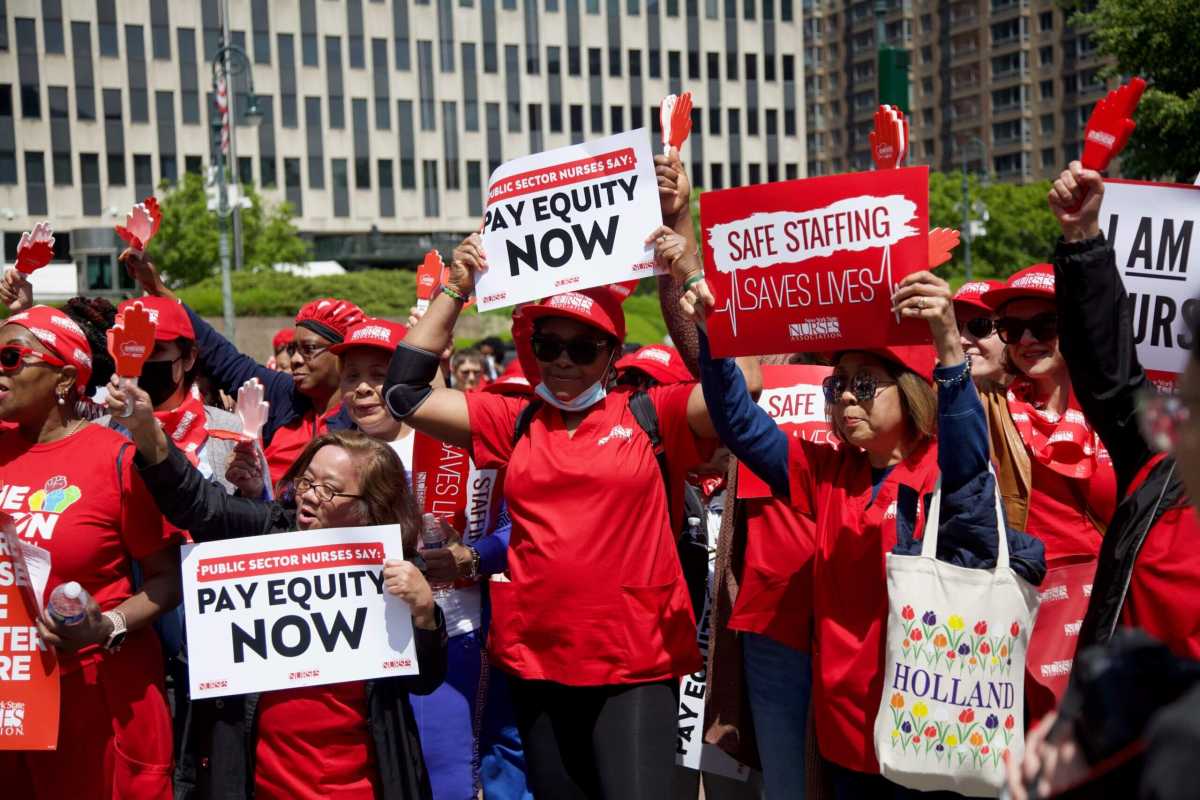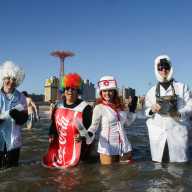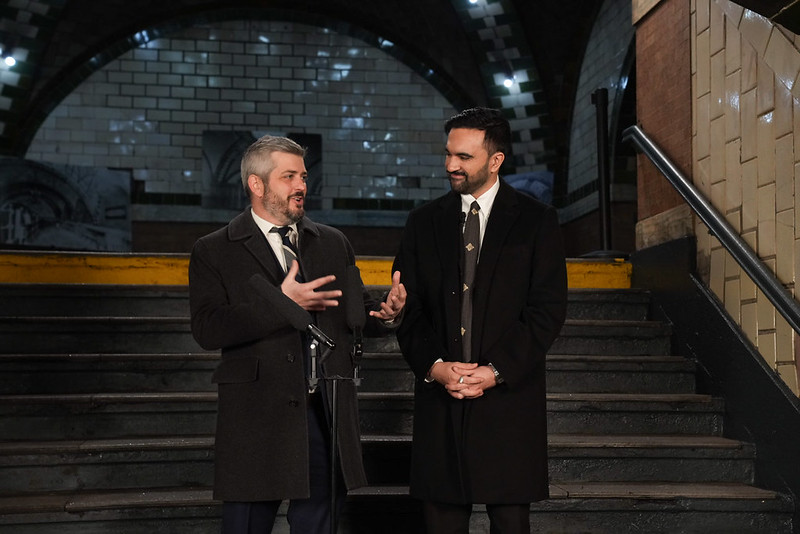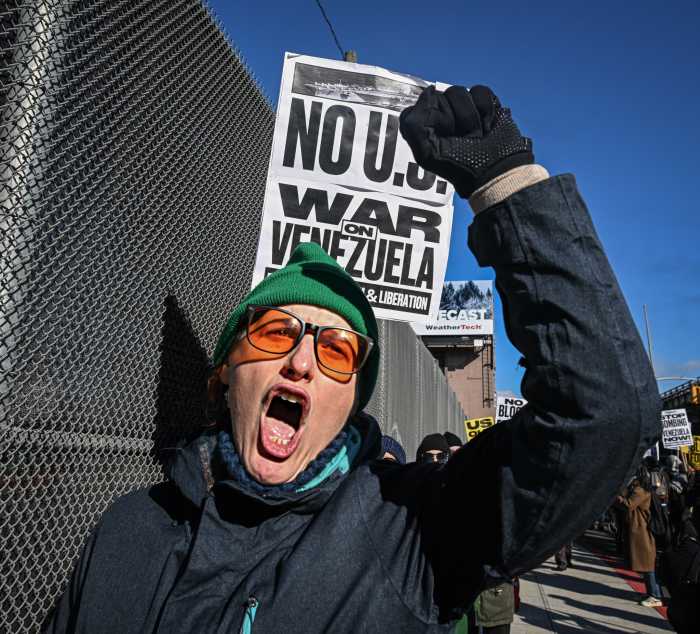Call it a concrete bungle!
Critics says that the city was horribly mistaken when it indicated last week that concrete was the only viable alternative for the repaired Coney Island Boardwalk, because environmentalists and one leading plastics scientist insist that prefabricated “faux-wood” could do the job just as well — or better.
At a meeting last week, a key Parks Department official said that plastic material — called “recycled plastic lumber” — would not work because it warps, gets slippery when wet, and becomes hot after hours in the sun.
But opponents, who will host their own meeting on Nov. 17, scoffed at this statement — literally!
“The U.S. Navy doesn’t think it’s slippery, the U.S. Army doesn’t either,” said Richard Lehman, referencing the fact that the military has made bridges out of plastic. “When plastic-based lumber gets wet, it is not slippery.”
Lehman, who is the director of the Advanced Polymer Center at Rutgers University, added that the real issue — one that he’s heard elsewhere, given that he is one of the leading scientists studying plastics — is the aesthetics of concrete, which many locals have said would turn the Boardwalk into a sidewalk.
“If you want a highway-look [on the Boardwalk], of course you go with concrete,” said Lehman. “But that is a major departure.”
The plastic lumber would still resemble a boardwalk and would seem an easier “sell” than the scored and colored concrete that the city favors.
But aesthetics are not the city’s top priority in an ailing economy.
According to the city, concrete costs $90 per square-foot, compared to $114 per square foot for a concrete slab topped with recycled plastic lumber. In other words, if the city replaces the entire, 2.7-mile-long Boardwalk, it will save a huge chunk of money by using concrete.
The bargain extends to the maintenance of concrete, as well.
“Concrete is less expensive to use, can last decades rather than up to 10 years, and requires virtually no maintenance,” said Meghan Lalor, a spokeswoman for the Parks Department. “It is significantly more effective than the other choices.”
But critics say that the cost of turning the Boardwalk into concrete may be steeper than anyone could imagine.
“We should not hastily turn our legendary Coney Island Boardwalk into just another concrete sidewalk,” said Borough President Markowitz. “With the increasing tourism in the area, the last thing we want to do is take away one of the main reasons people come to Coney Island!”
By mayoral decree, replacing the Boardwalk with the same wood that is there now — a tropical hardwood called ipe — is not an option.
Prior to Mayor Bloomberg’s declaration in 2008, ipe was used in construction and maintenance of many park benches, docks, and promenades throughout the city. It is also the timber on the pedestrian walkway of the Brooklyn Bridge.
Environmentalists say Bloomie’s strong stance against tropical hardwoods is for the better.
“Ipe is called ‘The Amazon’s green gold.’ It’s horrible,” said Tim Keating, the co-founder of the environmental group,Rainforest Relief. “Loggers just go deeper and deeper into the forest [to harvest it].”
According to Keating, ipe is the largest wood export out of Brazil, and one of the leading causes of deforestation in the Amazon.
But Keating added that other types of wood on the Boardwalk are not out of the question.
He suggested a domestic wood such as Black Locust, which is grown on a farm, could be put atop a foundation made of plastic lumber — an option that would perhaps satisfy all the locals decrying the demise of the Boardwalk.
“We’re realistic, we know people want wood on the Boardwalk,” Keating said.
But the city appears committed to concrete, though the installation of it is on hold for the moment.
“Concrete and other paving materials have long been used at Rockaway Beach, Riis Beach, and Orchard Beach and are widely used around the country,” said Lalor. “We are committed to restoring Coney Island, serving its community well, creating a more sustainable city, and saving public dollars — and we look forward to doing all four at Coney Island.”
Rainforest Relief and the New York Climate Action Group’s meeting to discuss alternatives to a concrete boardwalk at the New York Aquarium [602 Surf Ave. at W. Eighth St. in Coney Island, (917) 648-4514] on Nov. 16 at 7 pm.


